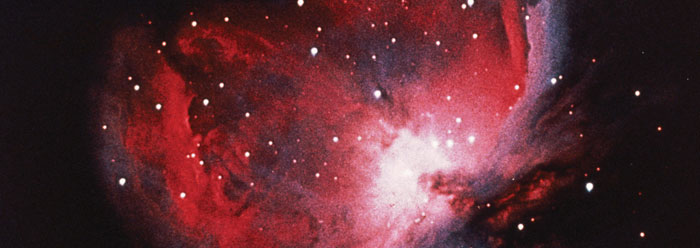Science and pseudoscience: how clear is the distinction? We need to look at history to understand the present. Scientists typically admire magician James Randi, who makes a living out of debunking pseudoscientific claims. He has been very clever at exposing charlatans who appeal to occult forces to explain "paranormal" phenomena. Real science only appeals to what is observable, testable, and repeatable--that's the ideal. Yet in the history of science, occult (Latin occultus, "secret") forces have frequently been employed. Two of the most notorious are widely accepted today.
The term "occult force" need not mean something demonic. It is something not yet understood: an "imponderable" substance. It can serve as a placeholder for an unknown cause of observed effects. Electricity and magnetism were named long before they were understood. And what could be more real than gravity? Yet even that has been suspect. Newton conceived of a universal force and made powerful use of it in his equations, but he "feigned no hypothesis" to explain what it was. The Cartesians criticized him for proposing a force without a mechanical explanation, ridiculing his occult force that acted mysteriously at a distance.
An occult force may produce measurable, predictable effects. Sooner or later, the proposed cause must achieve a scientific consensus. The history of science is replete with imponderable substances that were widely accepted at the time. Some lost out: caloric, phlogiston, animal magnetism. Others became accepted: gravity, electromagnetism, the strong and weak nuclear forces.
We tend to think of the accepted imponderables as real, and the losers as pseudoscientific. Yet the distinctions are not always clear. Is there a luminiferous ether that acts as a medium for light waves? Are quarks real? What about the strings in string theory, or alternate dimensions? Eminent scientists and philosophers have defended imponderables purely on their utility, while dismissing any claims to their real existence.
Today, most cosmologists claim that 96% of the universe consists of two imponderable substances: dark matter and dark energy. No one has a clue what these are. This huge appeal to occult forces is making many uncomfortable. Richard Panek, in a March 11, 2007 New York Times article, quipped, "'You get to invoke the tooth fairy only once,' meaning dark matter, 'but now we have to invoke the tooth fairy twice,' meaning dark energy." In an April 11, 2007 article in Nature, Jenny Hogan described the mood at a recent cosmology conference; one astronomer said, "There is a sense of desperation…. The standard model is horribly ugly, but the data support it." Dark energy was called "a profound problem from the viewpoint of fundamental physics."
It remains to be seen if cosmologists will be able to establish the existence of dark matter and dark energy to everyone's satisfaction. But it becomes difficult to defend against charges of pseudoscience when the bulk of your model depends on imponderable substances. If they only serve to shield a model from being falsified, appeals to dark things seem occult in more than one sense.
*David F. Coppedge works in the Cassini program at the Jet Propulsion Laboratory. (The author's views are his own.)
Cite this article: Coppedge, D. 2007. Imponderable Substances. Acts & Facts. 36 (8): 15.
















